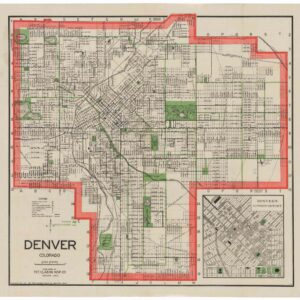A remarkable collection of photographs of one of the great engineering marvels of 20th century America.
Ninety-Three Photographs Documenting the Construction of Hoover Dam in Original Kodak Box.
Out of stock
Description
This collection includes ninety-three photographs, which mostly depict construction work on Hoover Dam in the early 1930s. A smaller number of photographs show the camps of workers and scenery around the construction site.
Prior to the construction of Hoover Dam, the Colorado River was notoriously unpredictable, with drastic variations between seasons and years. Constructing a dam and reservoir would help to tame the river and regulate its flow. Additionally, it would provide a steady supply of water for farms and communities further downriver, communities that were growing at the time and have continued to grow ever since. Finally, the dam was constructed with the aim of generating hydroelectric power, which would likewise lay a basis for future growth throughout the Southwest.
The scale of the dam and related projects was incredibly ambitious. When it was built, it was the largest concrete structure and largest hydroelectric facility ever built. It remains one of the largest dams in the world, while Lake Mead is still the largest reservoir in the Continental U.S. It also helped to provide thousands of jobs during the world part of the Great Depression.
Engineers had to overcome many obstacles and test out unproven techniques, while workers faced extremely hazardous conditions (112 died during the surveying and construction of the dam, while several dozen more died from ‘pneumonia,’ perhaps a euphemism for carbon monoxide poisoning). The project has been criticized in recent years for its impact on Native American communities and the environment, as well as encouraging an unsustainable path of development in the region. Nevertheless, for better for worse, Hoover Dam and Lake Mead have become an integral and irreplaceable part of the region’s ecology and built environment.
*Please email us if you would like to see more of the photographs.
Cartographer(s):
Condition Description
93 photographs, in original Kodak box. One box fold separating; a few minor surface scratches on photographs; near fine.
References



